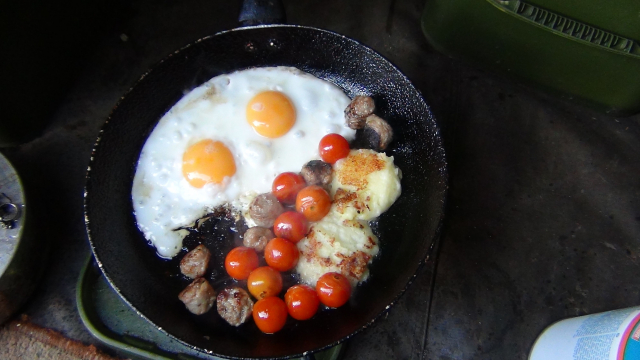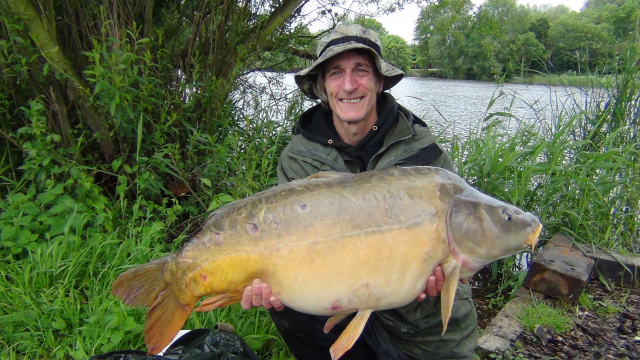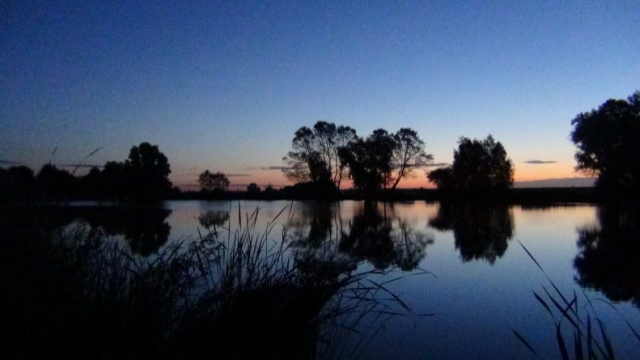
After the capture of the forty I spent some time re-rigging all the rods and getting some more bait out onto the prime spot. I still felt that this area could produce another fish and the key as always for me was to entice the fish into the area with the little and often approach of baiting that has stood me in such good stead throughout my angling life. Ideally you want enough bait in a swim to entice them in to feed and build confidence so they slip up on the hook bait. Too much bait and you decrease your chances, too little bait and they might clear it up and not come back for more.
Carp do not have a stomach but a long intestinal tract where upon small amounts of food are moved along through it and digested, because of this they naturally eat multiple small amounts. Often when you watch carp moving around a lake and feeding you will see them in small groups of 2-4 fish. Moreover when watching them feed you will see them come in, graze for a while and then move off never staying too long. They will then take a circular trip back to the spot to feed again or move on to graze elsewhere. So with 2-4 carp eating only small amounts at a time you can see how the little and often approach can be conducive to good angling and also mirrors their natural feeding cycle.
Carp are a cold blooded creature which means their digestive processes speed up or slowdown in relation to the water temperature. During the winter they will feed very little compared to the high summer when they will eat everything put in front of them. This has to be taken into account when feeding the swim, so three good handfuls every couple of hours in June will become one every three hours in October and perhaps only a single and a stick in the winter. But even in June if the temperature drops and the wind picks up? Well then, a winter approach to baiting might then be the best strategy. Of course you have the size of lake and the numbers and size of carp to take into account also when deciding how much and how often.
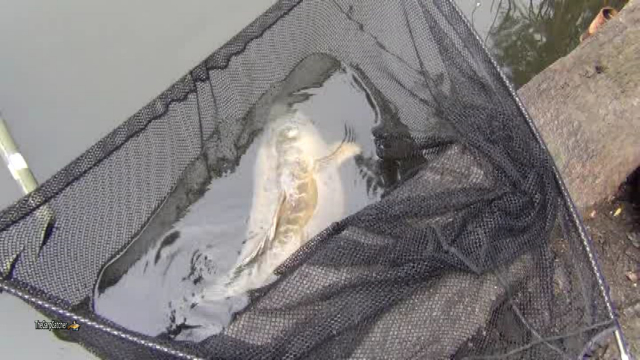
To make it even more complicated you also have the issue of captures and angling pressure. In every lake there are those carp which make up the bulk of anglers catches (like Frisbee or the Space Hopper in Willow) and then there are those that perhaps only get caught once in a season. So by the end of the summer you will have a situation where you are fishing for carp that have already been caught and will be correspondingly harder to catch. This will influence their natural behaviour and you could see them coming in to your swim, grazing and then moving off never to come back.
Carp are omnivore which means they eat both plant and animal material as their primary food sources. The digestibility of bait plays an important part in bait application. What the carp gets nutritionally from bait will over time create an association via the baits label to your bait. This used to be called Nutritional Recognition however we now realise that it's just natures mechanisms at play setting up locks and keys so that the carp can identify food sources. Applying bait regularly that the carp already recognise as primary food sources, that are balanced and digestible forms a natural circle. If the carp can easily digest the food source then it will in turn most likely eat more, the more the carp eats and digests the stronger the association with your bait as a primary food source it becomes.
After seeing a fish roll just to my right I changed my setup to using all four rods, two either side of the swim using my wonderfully old school Chris Brown kit (Google: Chris Brown carp). I abandoned the left hand rod in the margins as I was fed up with fighting with the coots! They could have it .The left hand pair of rods were now on the prime area 30 yards out and to my left and the right hand pair on a bar I had discovered previously which was around 20 or so yards out and to my right.
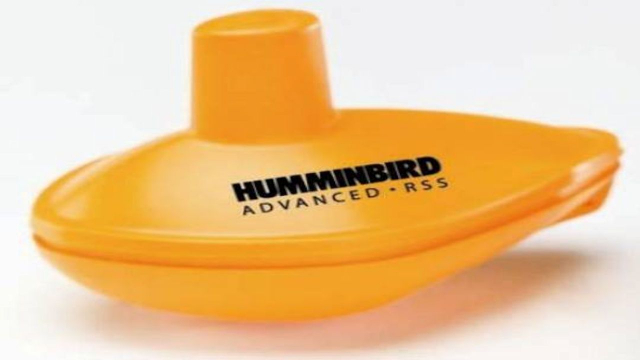
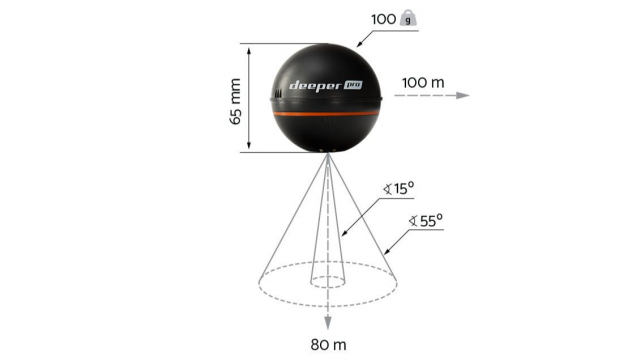
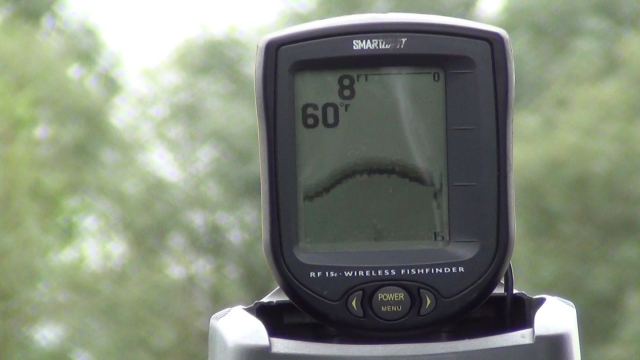
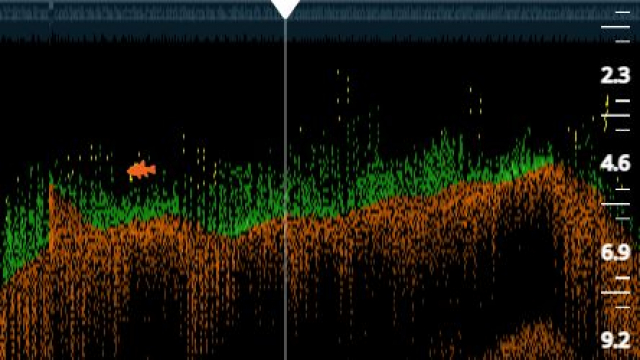
Most anglers use a marker rod and or a rod with a lead to find depths, features, and weedbeds and I do also when there is a need however most of the time I use a Hummingbird smartcast RF15e. I first saw one being used on the Woolpack back in 2006 by the then bailiff Colin, and was immediately impressed with the accuracy and quietness of the whole procedure. It consists of a sensor (sonar device) that floats and a receiver with a screen to interpret the sensor readings. Within minutes Colin had mapped out the whole area and knew exactly where to place his bait, fantastic I thought and got one within a week. This piece of kit gives me a big edge, is almost silent in use and takes out all the guesswork. Some say it's cheating? Ridiculous! It's not a bait boat! You have to cast it and retrieve it with a rod and line and then you still have to interpret what you find to make it meaningful in catching carp and be able to cast to that spot…without a marker rod if you can! It says it's a fish finder and in the depths of winter when the carp are all holed up it might be, but in the summer you'll get a bleep as a fish passes by and that's it. To me my smartcast is no different or any less important than my sophisticated delkim bite alarms, both of which I can still do without if needed but would rather not.
Once I had made a half dozen casts with the smartcast I knew all I needed to know, it was 20 or so yards out and 30 yards long, 7 foot of water on top and 8-9-10 foot either side. It was not uniform either and tailed off at the ends and was quite up and down along its length. To find out exactly where I should put the baits I leaded around with a one ounce lead. The top consisted of fine weed and gravely areas and the bottom gully's had silt accumulation. Now I have never found deep silt to be that productive for me preferring myself to fish the edges where time and again I had seen carp prefer to feed.
Silt contains much of the food that the carp eats like shrimps, fleas, snails, larvae and worms so putting bait there seems an obvious choice. The left hand rod was cast over the bar and the lead pulled back until I felt the rattle of gravel come up the line. The right hand rod was placed squarely on the top of the bar in the same way 2 meters to the right on a smooth gravely patch. Line was fed off the spools on all four rods to ensure my fluorocarbon line had completely sunk and lay fully on the bottom. I put out a good handful of my homemade Red berry spread between the two spots on the right, topped up the prime spot and sat back for a cupper and some food The weather had improved somewhat with the rain abating and the wind moving back around to the north east.
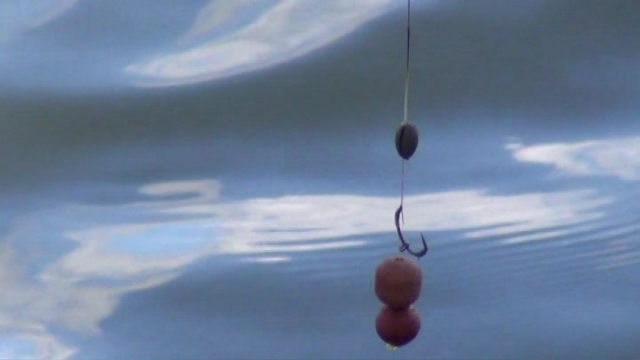
By now I was getting tired and so I decided that it would be a good idea to get some shuteye for a while. It has to be said I operate best on a good kip and when I get tired mistakes can creep in so with that in mind I laid my head down for a few hours. At one o'clock I had a sharp lift and drop on the left hand rod on the bar, at one fifteen pm the right hand rod on top of the bar was away. The fish was on and tracking to the right and then it was off. I pulled in the rig and found that the hook was blunt; I pulled in the left hand rod and the same result, a blunt hook? After some deliberation I came up with the conclusion that my chemically sharpened, needle sharp hooks had blunted on the gravel whilst dragging the rigs into position.
This can happen with a straight point hook quite easily and I cursed myself for such a silly error. Often when things like this happen you can kick yourself for making such a mistake however I always try to analyse situations in a logical way looking for reasons because if you have a reason then you can fix it, but you can't fix excuses. I changed all the rigs on all four rods to beaked Fox SSC's. Now I test all my hooks for sharpness before use by dragging the point across my thumb nail 3 times, if it catches every time it's accepted if it fails even the once it's discarded.
The rig I use most of the time with my pendulum setups is the combi, either as a snowman or popup. I make all my own hook baits as well as popups and to be honest I find the corkball most useful for popup's. Since I don't need to make the popup mix buoyant then the base mix for my hookers and popups remains the same as the feed bait except for the small addition of some hardener to the mix.
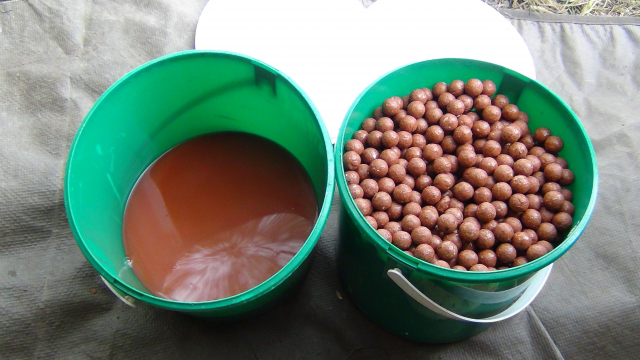
Most of the time I lean towards hydration of my baits before use as I find it logical that the carp would be less cautious of them, also they have proved to be more effective when fishing over silt. However I take care to ensure that my bait, even though it is to some degree washed out, is still capable of delivering the attraction and nutrition I want. Bait that is denser than the surrounding water (typically fishmeal based baits) will take on that water and in effect suck up the silt smell from the bottom.
This is called osmosis, the flow of a less dense fluid through a semi-permeable membrane (the skin of the boilie) to denser media (the boilie). As carp anglers we call this washing out'. When using dry'ish baits you will also get a take on of water, however this is because the bait is now porous and allows the water to flow into the bait like a sponge. The net result of this take on of water will also affect the bait making it less buoyant and this adds to your bait sinking further into the silt and being tainted which I feel is never a good thing. Hydrating bait will in affect slow down this process of exchange and rather than taint the bait it will taint the surrounding area with our hydration fluid where the boilie sits.
Osmosis stops once both the bait and the surrounding water are of the same density. In theory if you hydrate your bait with the lake water enough then osmosis might not occur at all which is almost what we want. The addition of a liquid sugar like Molasses, Glucose, Maltose, Honey etc. to the base mix will also aid the angler as sugars have larger molecules that do not easily pass through a membrane which in turn helps resist the effect of osmosis and slow down the washing out effect. This is why the sweeter baits, Milk/Bird food/Maize based baits work so well in silty areas.
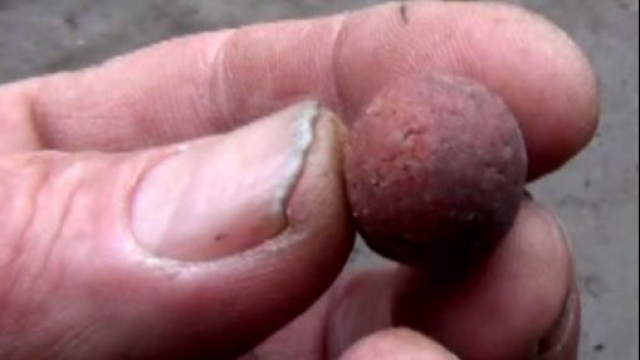
Back to the fishing and the left hand rod was again placed on the bar just over the top and into the silt; a small piece of dissolving foam protected the hook whilst I gently pulled the line back so the lead just hit gravel on the edge of the silt. There are two ways of doing this either, point the rod at the spot and pull back the line with your fingers (if it is close in then this method is preferred) or gently lift and inch back the rod tip feeling for it. I prefer the later as the rod will magnify any vibrations you get up the line. The right hand rod was positioned again to the right and on top of the bar on a clean area in the same way. The rods on the prime spot to the right were also checked and topped up again with berry and I settled back to await events.
It was late afternoon and I was still pretty tired so after a quick brew I decided to get into my sleeping bag and try yet again to get some sleep. A few hours later at around 7 pm the right hand rod on top of the bar was away again. I don't remember much about getting to the rod except suddenly standing there with it in my hand. The rod hooped over and the fish pulled hard tracking right and up the lake. It was too soon to try and stop it so I let it go against the clutch hoping and praying that this time, I had got it right and the hook hold would not fail me. The fish boiled furiously on the surface 40 yards out turned left and continued to power out into the lake taking line at its leisure.
I stayed in touch adjusting the drag on the spool with my index finger in an attempt to slow it down a little but it just kept on going and going. Eventually it slowed down under the pressure from the rod and turned into the bank. As the fish made its way in I wound down as much as I dare using the opportunity to gain as much line as I could. By now I was thinking that the fish I had on was most likely a small one rather than a lump because it really was going like one. However when it got to within 20 yards of the bank and yet again furiously rolled I could quite clearly see that I had another lump on.
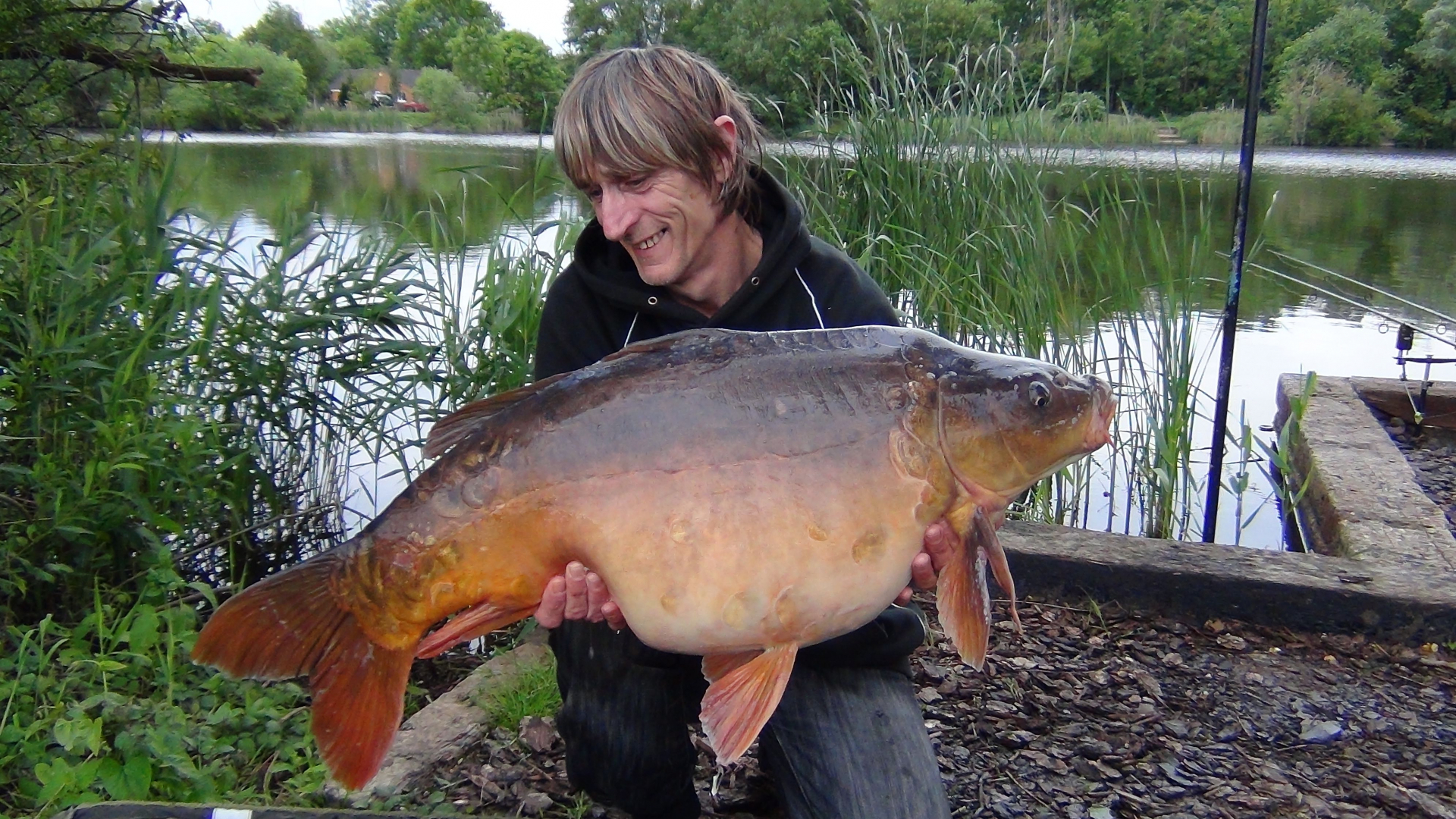
This fish was going to be mine, all I had to do was stay in touch, keep calm and wait my chance. However this fish had other ideas and just kept on going and going, turning this way, boiling furiously, turning again and racing up the margin. Side strain and the clutch saved it from ever going too far but I knew that the longer the fight went on the more chance the hook would have of slipping out. Eventually I had it under the rod tip in 6 foot of water circling; little by little I bought it up in the water and was relieved to see it beaten when it turned on its side and took a gulpful of air!. One last pull back on the rod, net outstretched and in she went, job done, she was mine.
You don’t often catch a forty and a thirty in the same day but then willow has that to offer if you’re fortunate, if you get it right. As a kid I was always amazed when I caught a fish and I still am in many ways.
Next time out I am back on willow, only this time with six other eager anglers all wanting to catch a lump and already settled in when I arrive…
Steve Whitby

